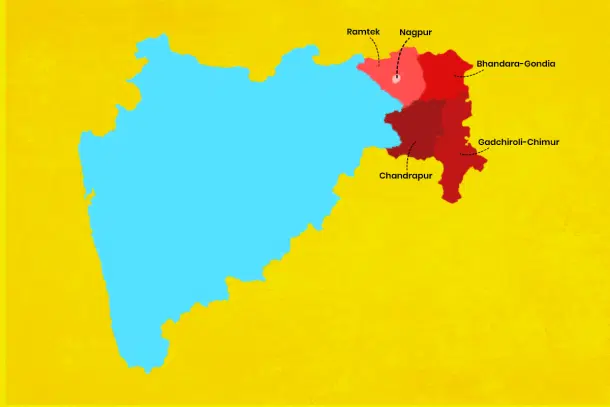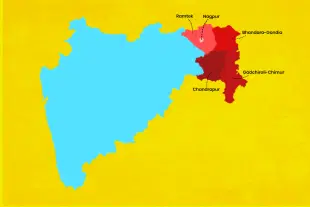Politics
Phase 1 Polling In Maharashtra: A Brief Review
Varun Singh
Apr 20, 2024, 04:05 PM | Updated 04:11 PM IST
Save & read from anywhere!
Bookmark stories for easy access on any device or the Swarajya app.


Friday, 19 April, saw the first phase of polling for the Lok Sabha elections. Five seats from Maharashtra went to polls in this phase — Nagpur, Chandrapur, Ramtek, Gadhchiroli-Chimur, and Bhandara-Gondia.
Maharashtra has a total of 48 Lok Sabha seats and in the first phase of the elections, the voting percentage of these five seats stood at 61.06, around 3 percentage points less than 2019 when these five seats had a voting percentage of 64.1.
One of the prime reasons that many attribute to the lower turnout is the heat. While the temperature in Chandrapur was above 43 degrees, in many areas that saw polling the temperature was above 42 degrees, and the 'feels like' temperature was even higher.
Many who were out in the field claimed that it was the heat which kept polling booths bereft of voters during the afternoon. Until 5 pm, the voter turnout was low, but as the day progressed, Central India's voters came out in larger numbers. By the time voting ended, the percentage had increased to 61.06 from 54.85 at 5 pm.
Another reason attributed to the lower turnout is the complaints that many names were missing from the electoral list and as per reports there were complaints of polling booth change in case of many voters.
Below is the 2019 and 2024 voting percentages in all the five seats.
2019
Nagpur: 54 per cent
Chandrapur: 65 per cent
Bhandara Gondia: 69 per cent
Gadchiroli: 71 per cent
Ramtek: 62 per cent
2024
Nagpur: 54.46 per cent
Chandrapur: 60.35 per cent
Bhandara Gondia: 64.08 per cent
Gadchiroli: 69.43 per cent
Ramtek. 59.58 per cent
Rural Maharashtra showed higher voter turnout compared to urban areas.
Notably, in many naxal-affected areas of Gadchiroli, the voting percentage was above 70.
For example, the Armori assembly segment saw the highest voting in the Gadhchiroli district. Here, the BJP won in 2019 assembly elections with over 52 per cent vote share. Many attribute the high voter turnout to promises of development and industrial growth, which were widely disseminated through media and social channels.
In most tribal areas, voter turnout has been notably high, often seen as a mandate for development. BJP's campaign, emphasising development, was prominent both on the ground and on social media.
Normally, getting people to the polling booths in most of our cities and villages is a challenging task. A higher voter turnout is often associated with a desire for change, while a lower turnout typically indicates support for the incumbent. In Maharashtra's five seats that went to polls in phase 1, the voter turnout is as high as the national average.
In this election, a few things appeared to have worked for the BJP. As earlier pointed out, development was a key agenda; apart from that, the Ram Mandir remained a key factor.
Both the field as well as social media were buzzing with Ram Mandir posters, Surya Tilak news, and the wait of 500 years ending for Hindus. These got many voters in urban as well as rural areas to the polling booth.
Varun Singh, is a Mumbai-based journalist and tracks politics and other important news from the western region of the country. Varun has spent close to 18 years in journalism.





